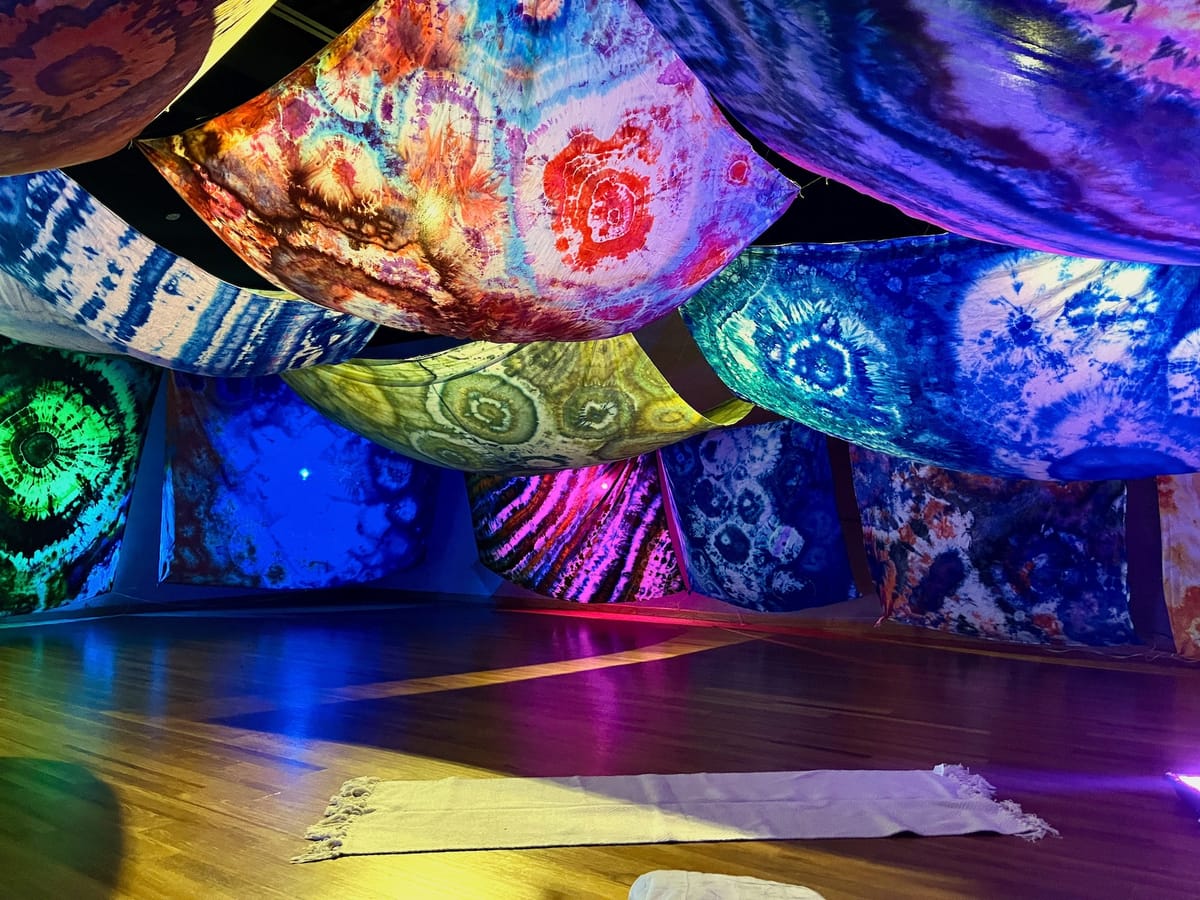Small worlds: Joanne Price at the Clayton Staples Gallery
In “Illustrated Nature,” the artist uses traditional printmaking processes to reflect on contemporary views of animals and their environments. It’s on view at the Wichita State gallery through November 22.

In a time of endless doomscrolling, streaming, and effortless binging, Joanne Price offers quiet images of measured, even mindful observation.
On a quiet Friday morning, I visited Joanne Price’s exhibition “Illustrated Nature” at the Clayton Staples Gallery in McKnight Art Center at Wichita State. This building bustles with creative exploration on most days, but I was lucky to stop by on a tranquil autumn day to take in Price’s eclectic menagerie.
Maybe the stony silence of McKnight put me in a meditative mood, but the ambiance framed this work especially well. The engraved prints encourage snail-paced observation, given the smaller formats and delicate linework.
“Illustrated Nature” includes downright cozy works, such as “Rob Livingston,” a 4.5-inch engraving of a cat napping in a stately library. Beautifully made books weave together illustration and verse, displayed with white gloves for careful inspection.
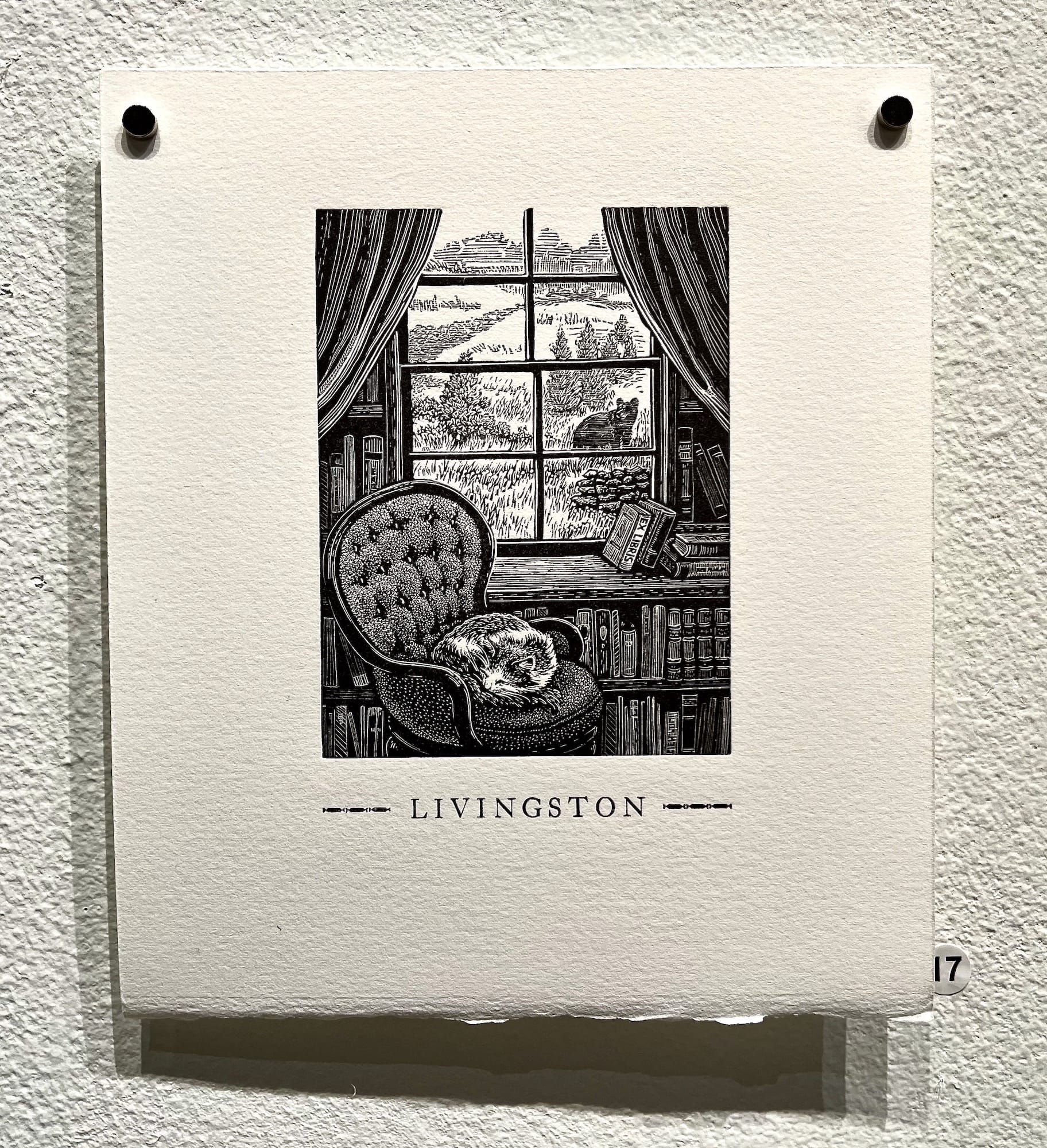
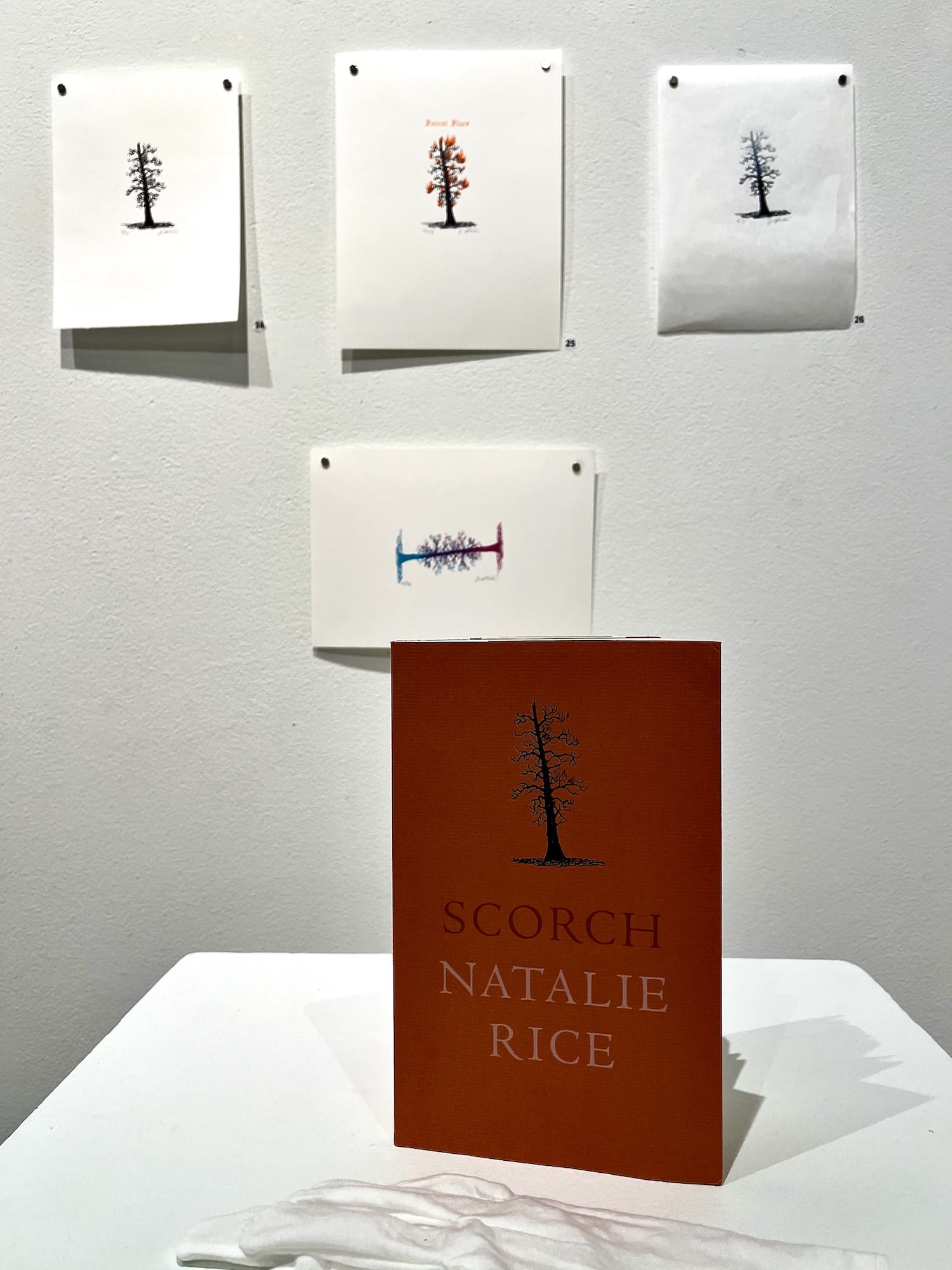
From left: Joanne Price, “Rob Livingston,” wood engraving on paper, 7 by 6 inches; “Scorch,” book by Natalie Rice, illustrations by Joanne Price, paperback, offset printing, dust jacket printed letterpress, published by Gaspereau Press.
As I rotated around the image-dense gallery (105 distinct objects), I was easily pulled into these small worlds, but I was also aware of my position as a viewer. Initially, I was peering into these meticulously crafted illustrations with some separation, like a casual reader visiting a library.
Admittedly, I am an outsider to the technical processes and history of engraving. I kept thinking about a perennial puzzle that many artists wrestle with: what to do with traditional techniques when faced with a contemporary understanding of the world?
On one hand, the focused research and practice of an expert technician like Price can imbue even a simple work with a sense of investment, history, and reverence. The thumbprint–sized “Bunny” — a black and white engraving of a rabbit in profile laying in a patch of grass — is like a short nursery rhyme that has always existed just so.
On the other hand, traditional craft and the associated formats might restrain expression or fix the dialogue to a particular place and time. In Price’s wood engraving “Homestead,” for instance, we see a circular image depicting farm buildings, plants, and animals — a pastoral landscape. But I learned at the artist’s talk a few days later that the format of this piece was determined by the grain end of the wood from which the plate was cut.
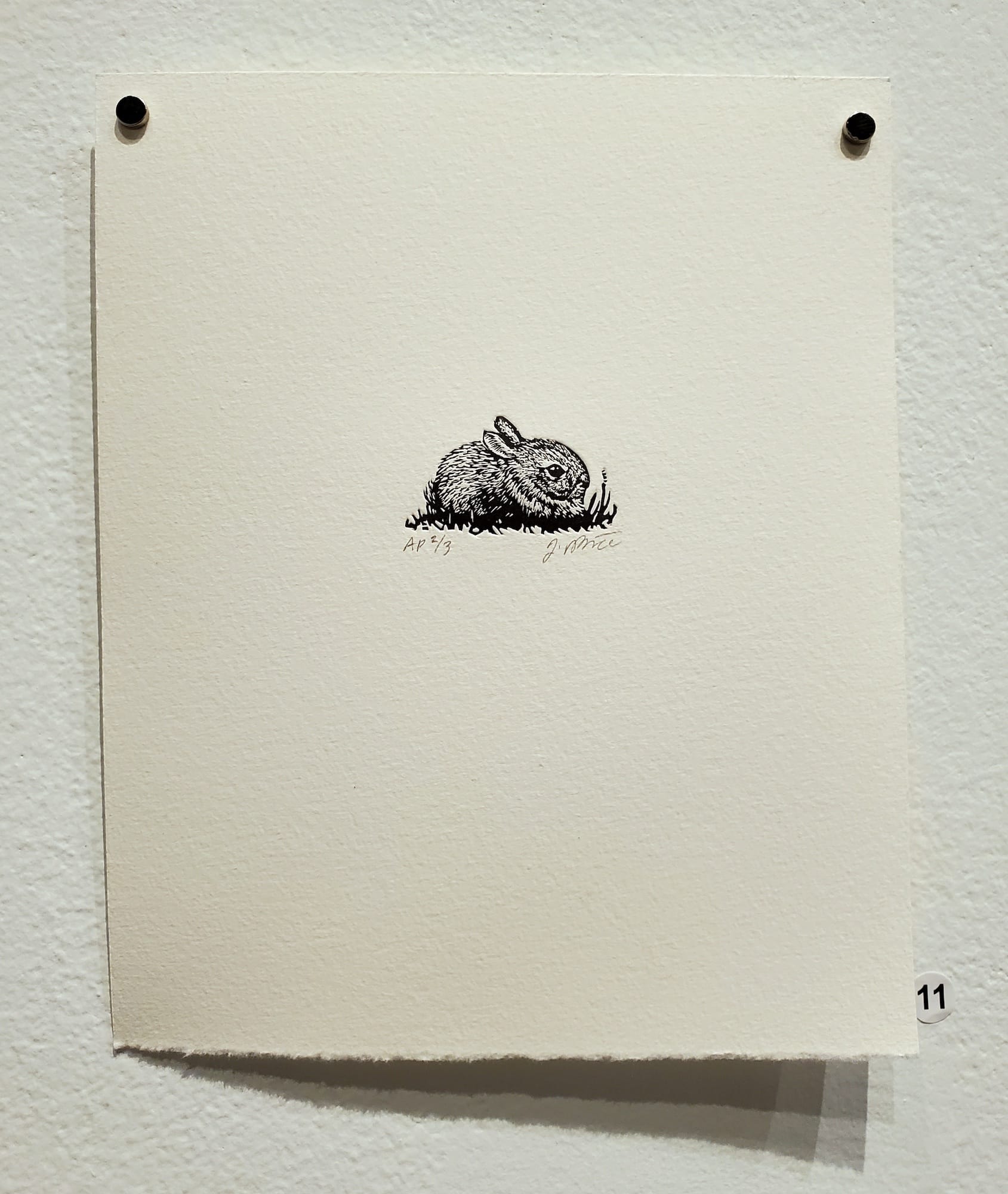
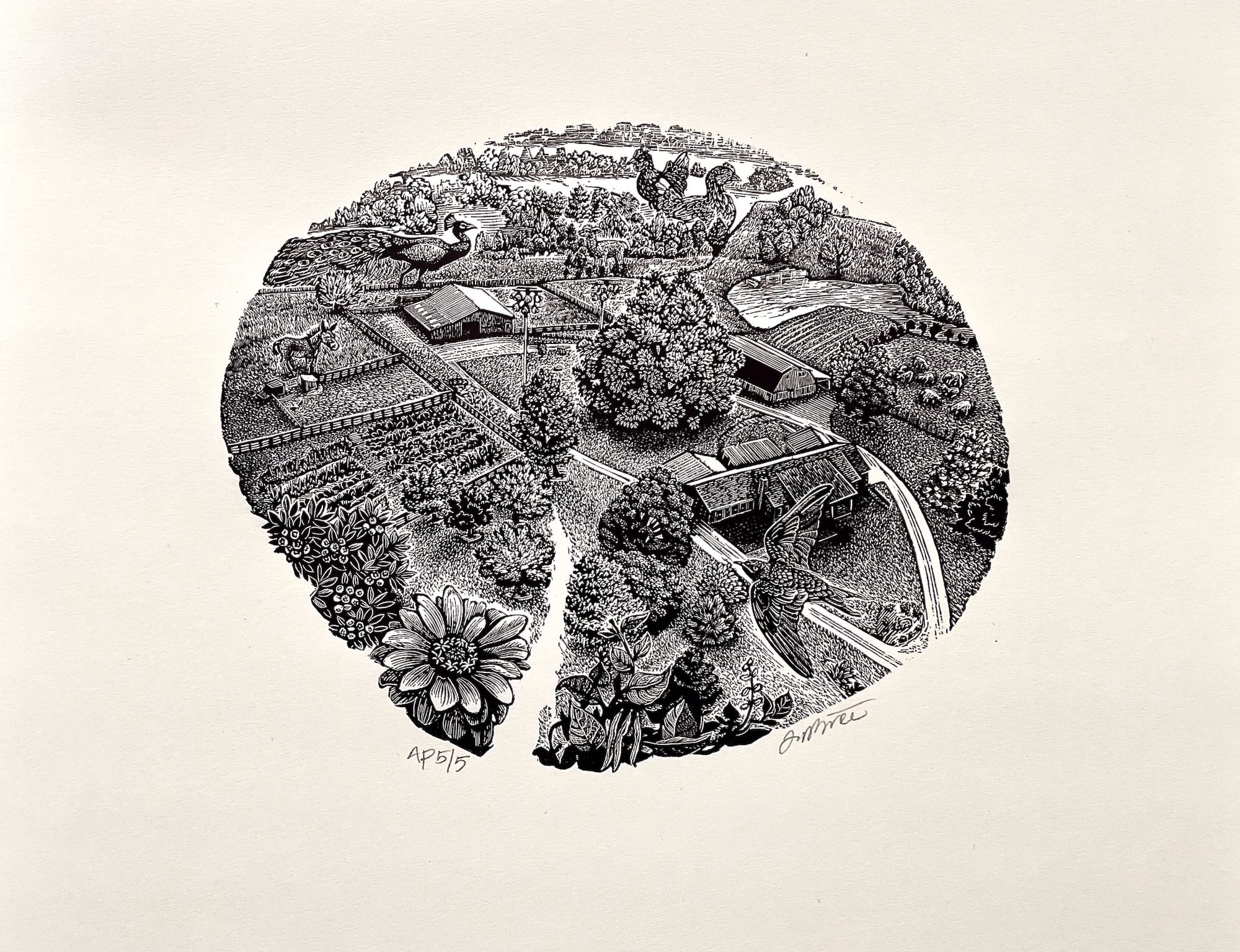
Works by Joanne Price, from left: “Bunny,” relief engraving on 7.5 by 6 inches (paper); “Homestead,” wood engraving, 5.75 xby 7 inches (image).
Price organizes “Illustrated Nature” around various projects and series she has created over the last 20 years. Though she has lived, taught, and printed in different regions of the U. S. during that time, ranging from Midwestern Minnesota to urban New York to rural Kentucky, there are consistent themes across these portfolios.
Some of the questions Price poses with her work include: How do we categorize and contain our natural surroundings? What do our relationships with animals say about us? How do we endanger the smallest members of our ecosystem and create problems for ourselves as we sprawl over and impose dominion over our environment? And what stories and folkways can we trace back to the trees, plants, animals, and insects that populate our world?
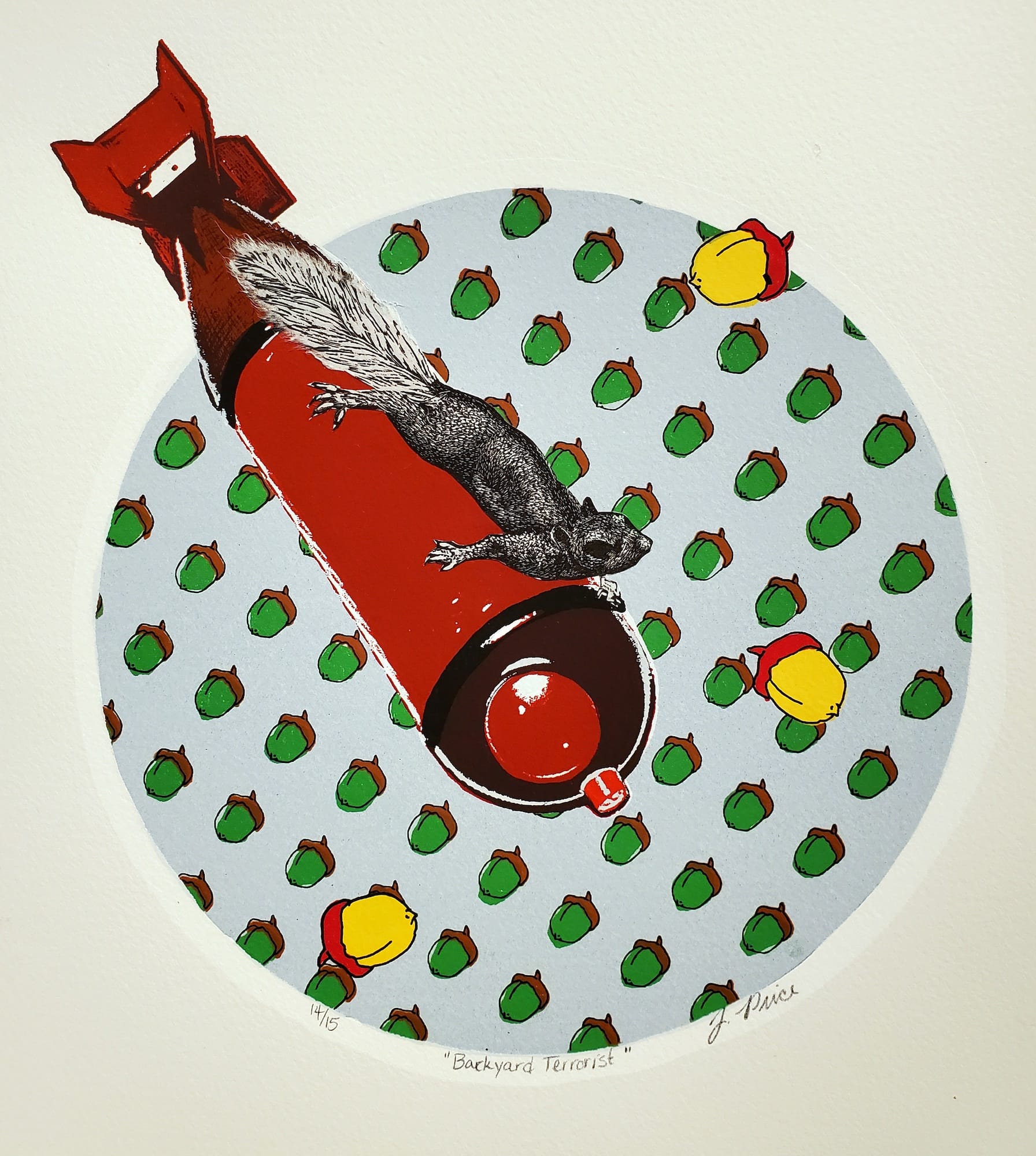
These are important ecological concerns for our day. Price couches the questions in an antique vernacular — she cites naturalist printmakers from the 18th and 19th century as influences.
But this is where the particular doorways into this work become especially important. Take, for example, the lack of matting and framing around the wall-mounted prints. With this casual presentation, even the most meticulously rendered subjects appear more like a note exchanged between friends than a precious icon.
Our free email newsletter is like having a friend who always knows what's happening
Get the scoop on Wichita’s arts & culture scene: events, news, artist opportunities, and more. Free, weekly & worth your while.
No spam. Unsubscribe anytime.
Occasionally, Price uses overt humor and a collage aesthetic, as in her “Backyard Terrorist” screenprint and collaged wood engraving of a squirrel ready to attack your backyard tomato garden. She also punctuates the exhibition with bold experiments in format that break the fourth wall. In an installation titled “Bright, Flight, Fall,” Price utilizes a woodcut with removed, negative space insect shapes, the play of gallery light, and scattered paper pieces to illustrate the fallout of insect populations due to light pollution.
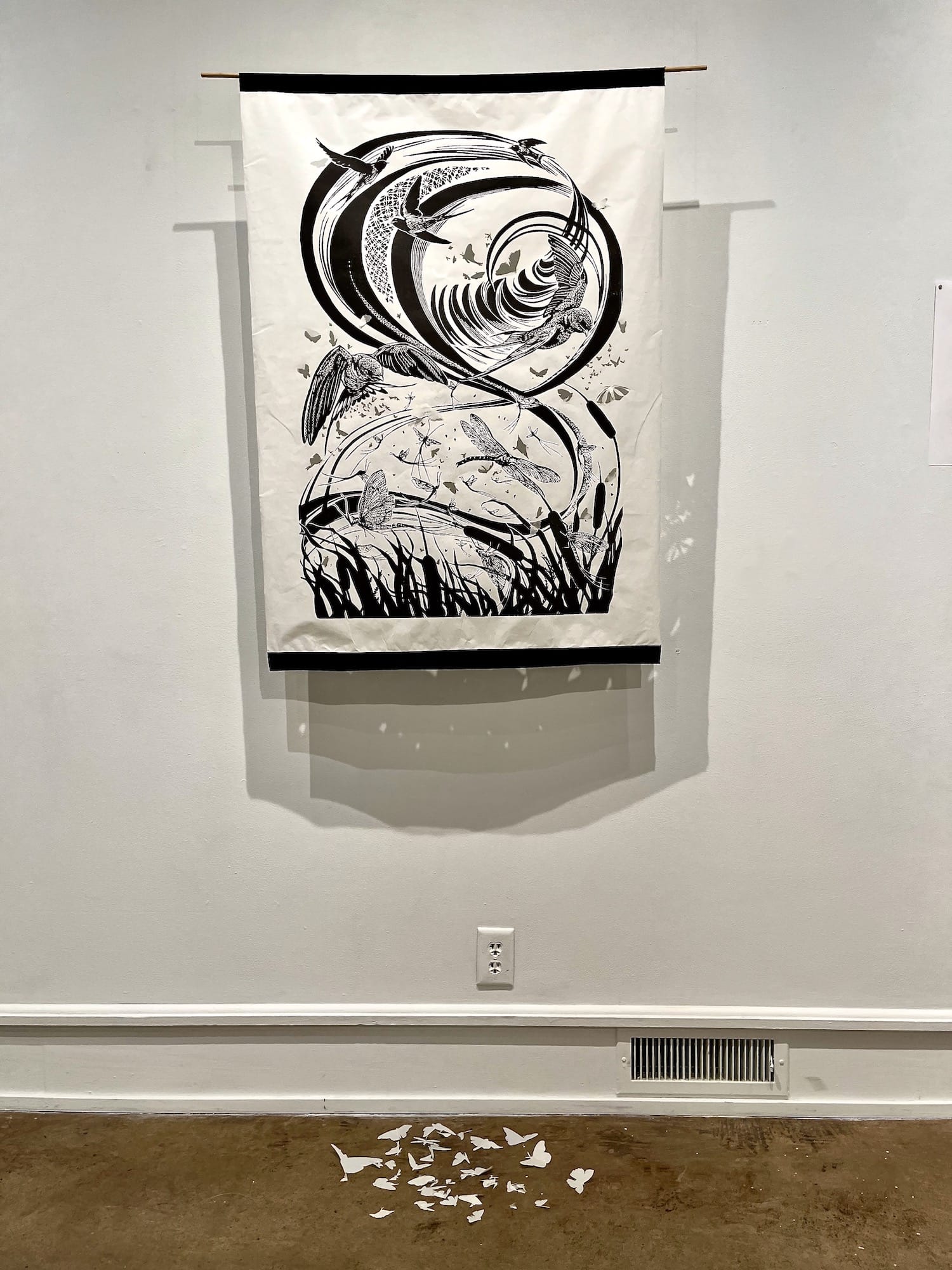
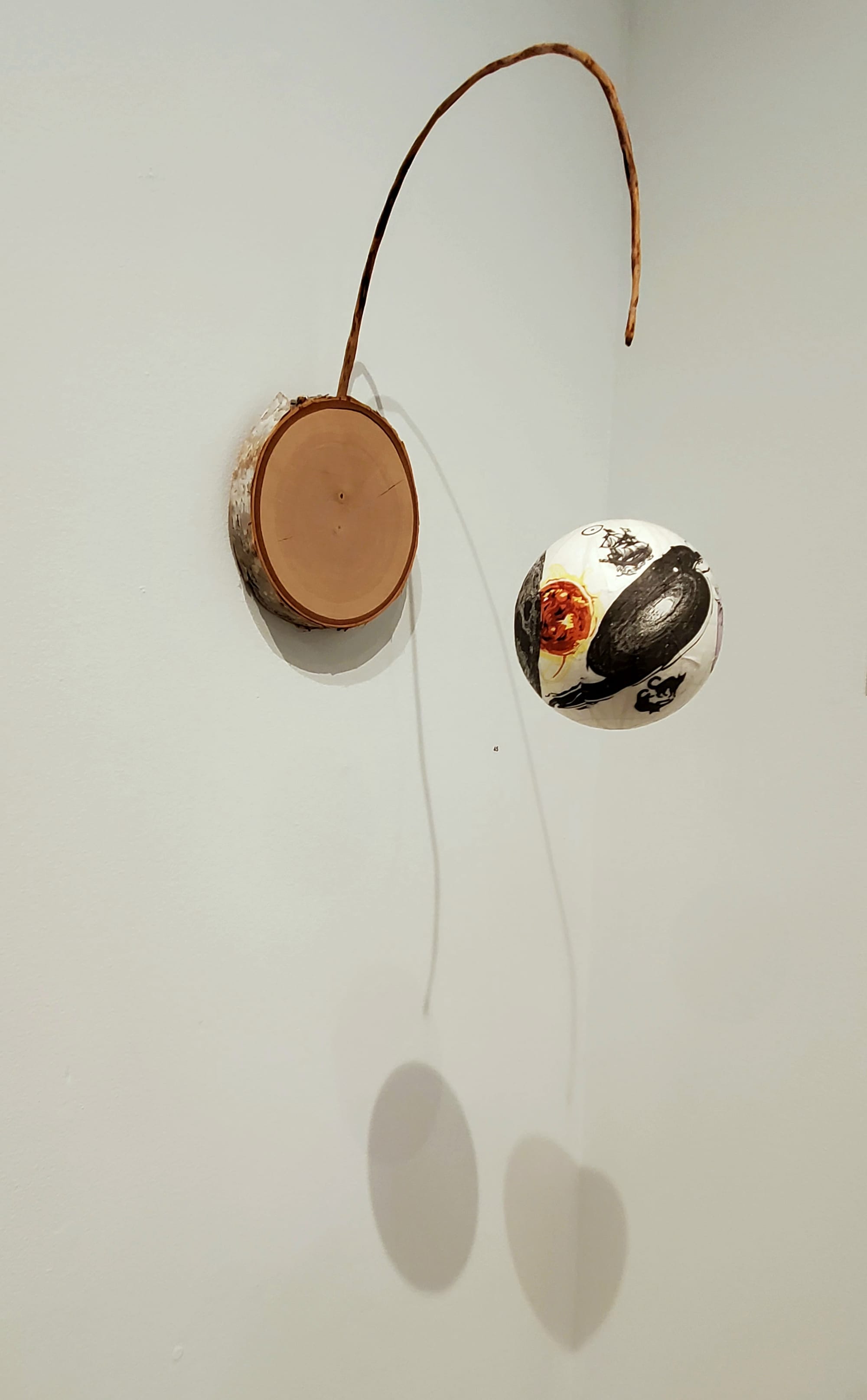
Works by Joanne Price, from left: “Bright, Flight, Fall,” woodcut, cut paper, thread, mohair black book cloth, dowel, 36 by 24 inches (image); “In a Round-About-Way (Sphere)”, seven-color relief engraving, birch end grain, maple branch, 17 by 7 by 17 inches.
The sculptural wall hanging “In a Round-About-Way” includes a spherical print that involves some mind-boggling manual wizardry. It is a seven-color relief print of overlapping nautical, astrological, and natural forms in a globe maker’s template that allows Price to construct a continuous image around the dangling three-dimensional form.
In a more subtle way, Price often employs playful formats to frame her illustrations, such as “Tree Swallow Sunset.” Here she showcases her skill in unifying a composition while poking at the edges of unifying devices. Engraved swallows swoop dynamically out of the wood cut dome that frames and anchors the perspective of the landscape, populated by human construction and frolicking wildlife.
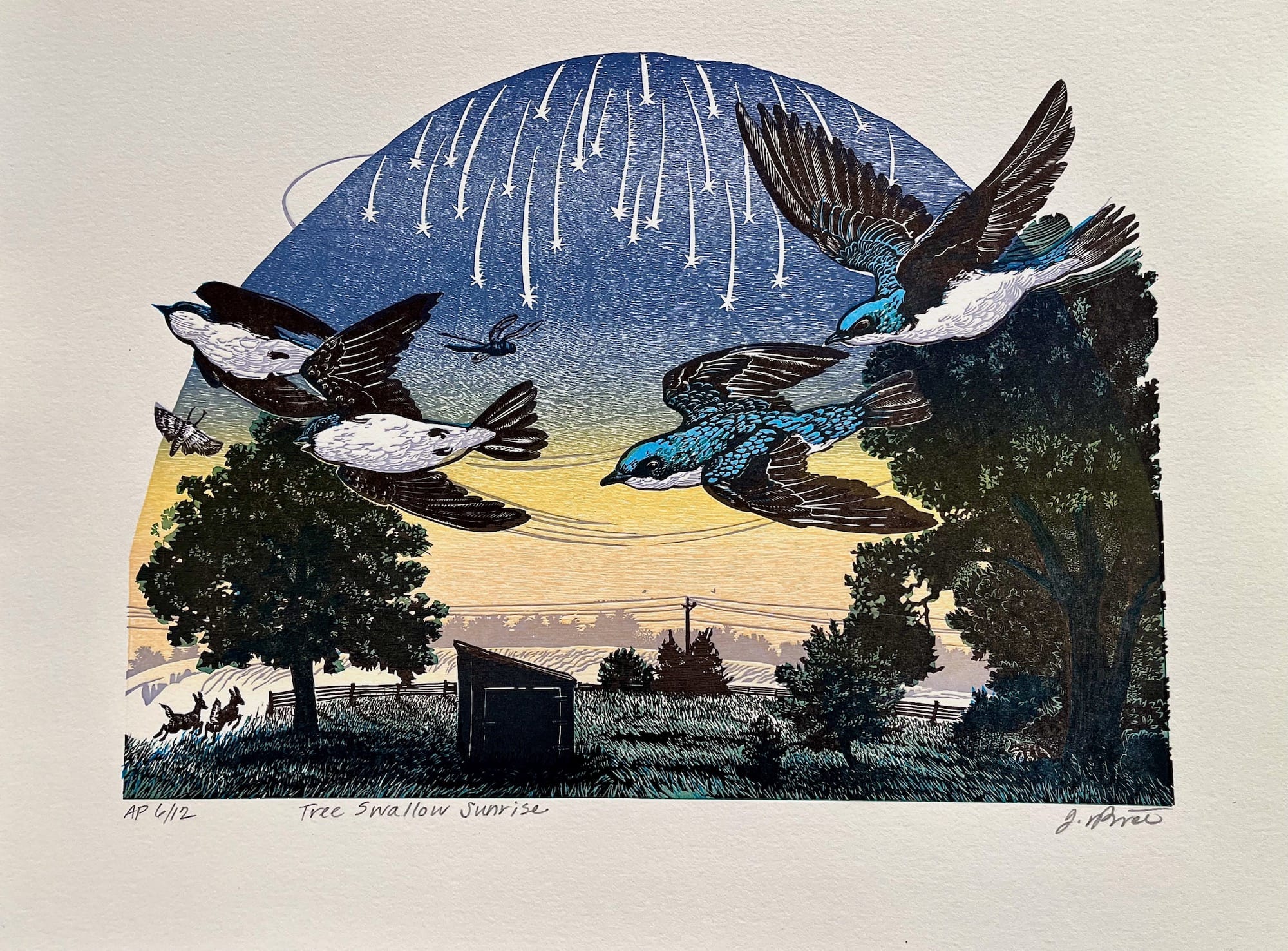
Conceptual framing, formal considerations, and the framing inherent in traditional processes and bindings do not limit Price, but instead offer walls for her to creatively push against. This is important because the sense of place, natural rhythms, and life cycles that she presents are so deserving of our attention.
Her stewardship of traditional studio practices mirrors her stewardship of natural spaces. Price has recently begun “re-wilding” the parts of her property in rural Kentucky surrounding her studio. Naturally, she has a series of print objects that tell the story of this effort.
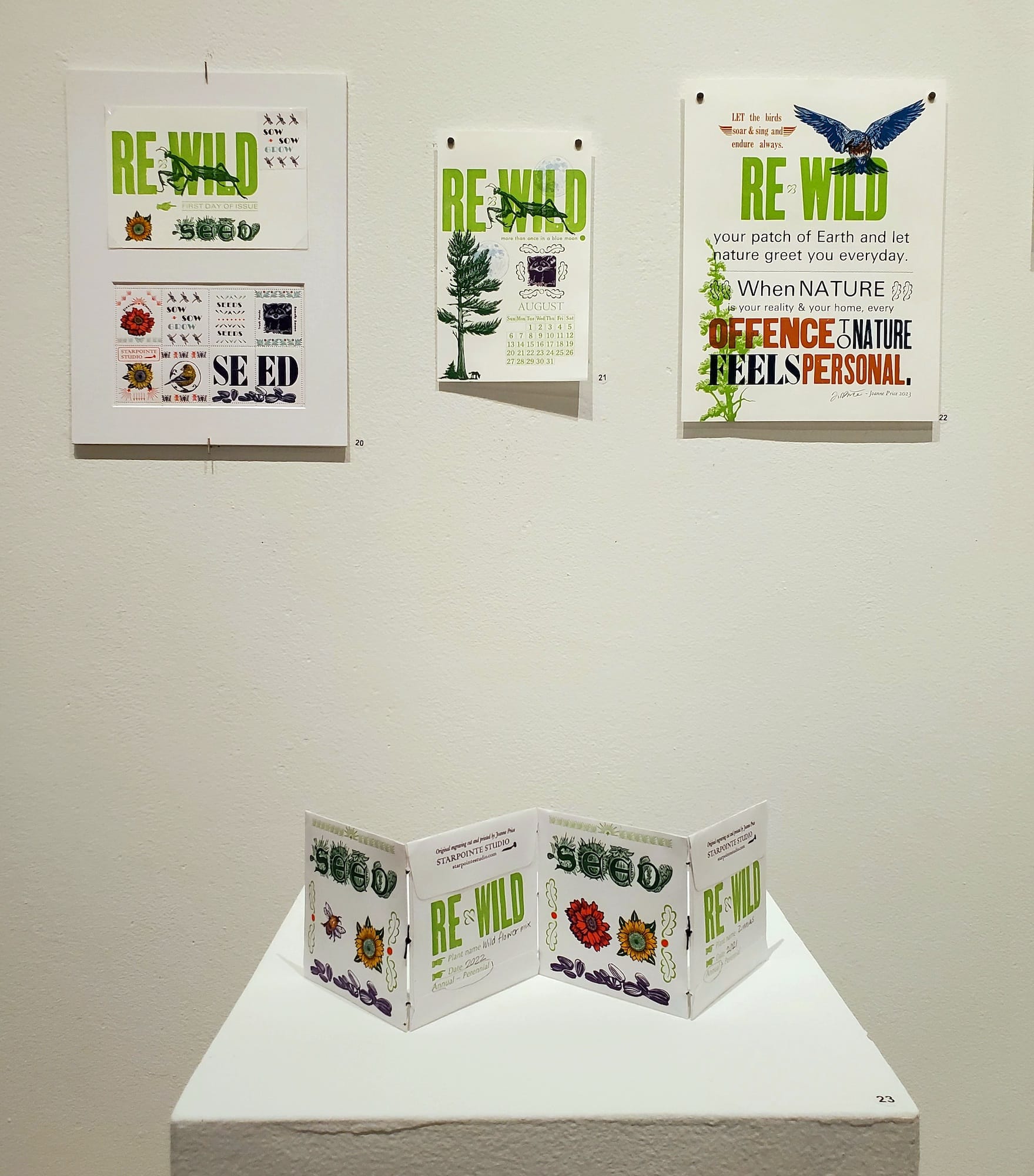
“Re-Wild Broadside” features this quote from Price: “Re-wild your patch of earth and let nature greet you every day. When nature is your reality and home, every offense to nature feels personal.” This may be the most direct appeal that Price makes to viewers in this benevolent exhibition. But even this bold graphic is infused with a sense of wonder, curiosity, and harmony rather than preaching.
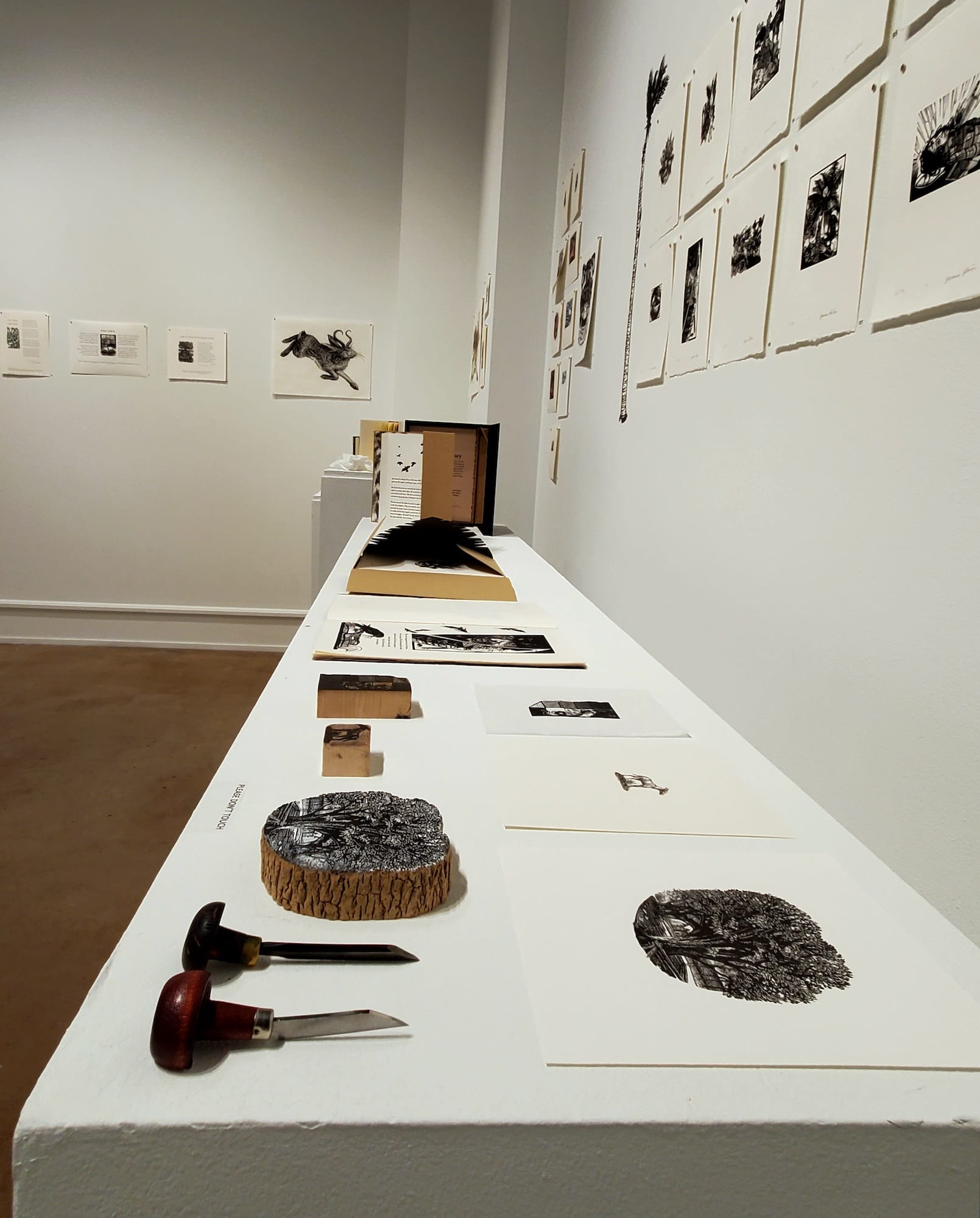
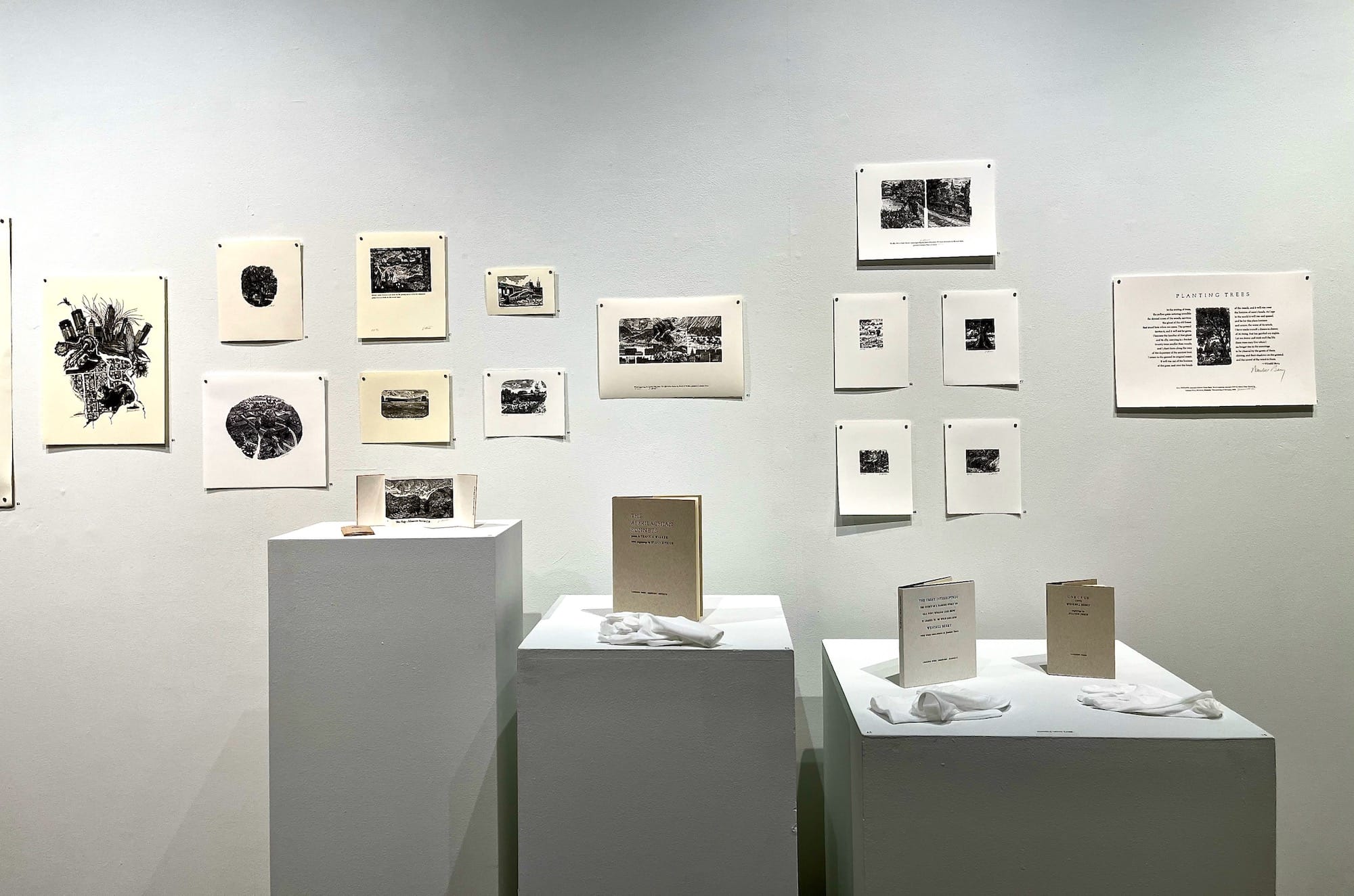
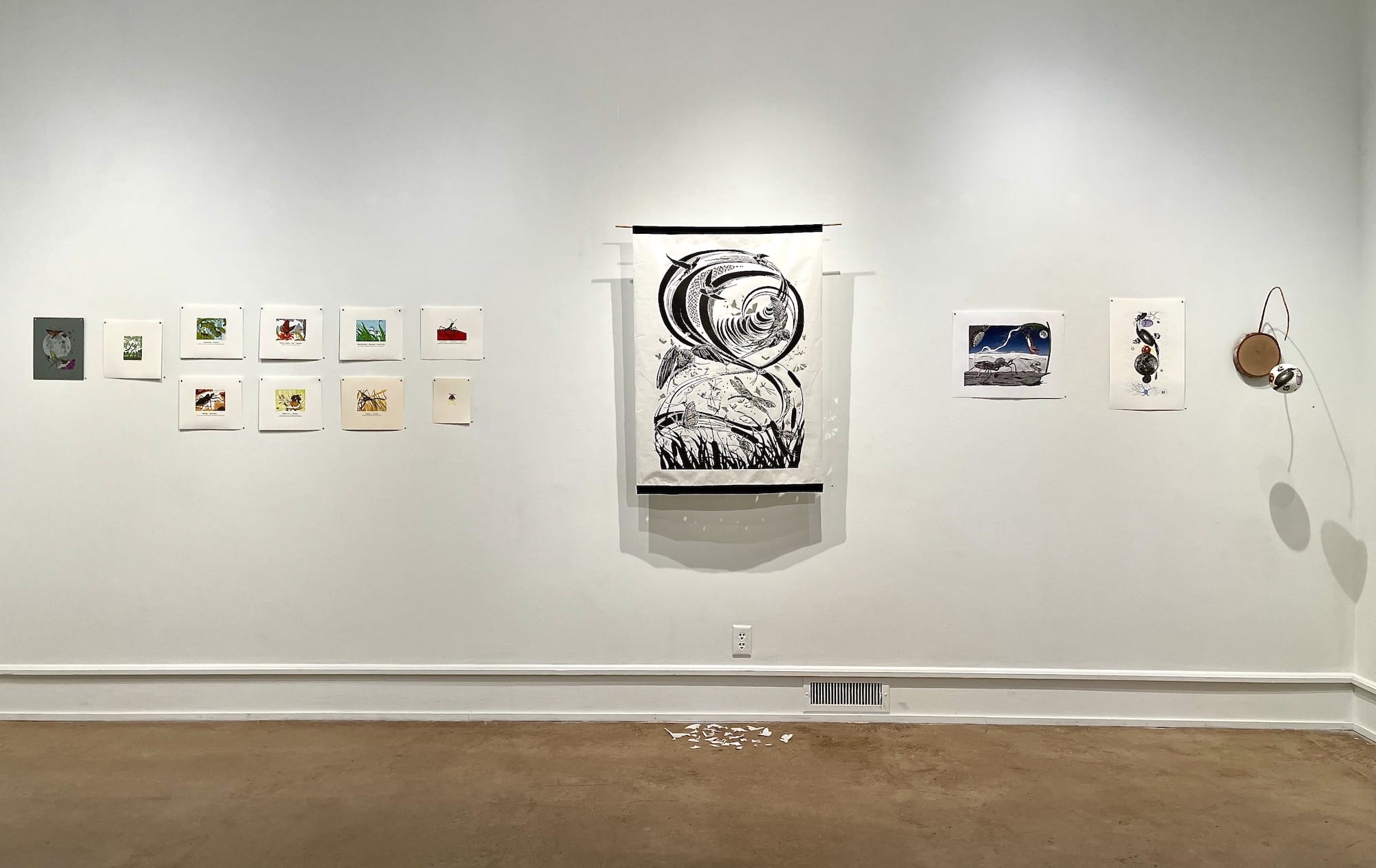
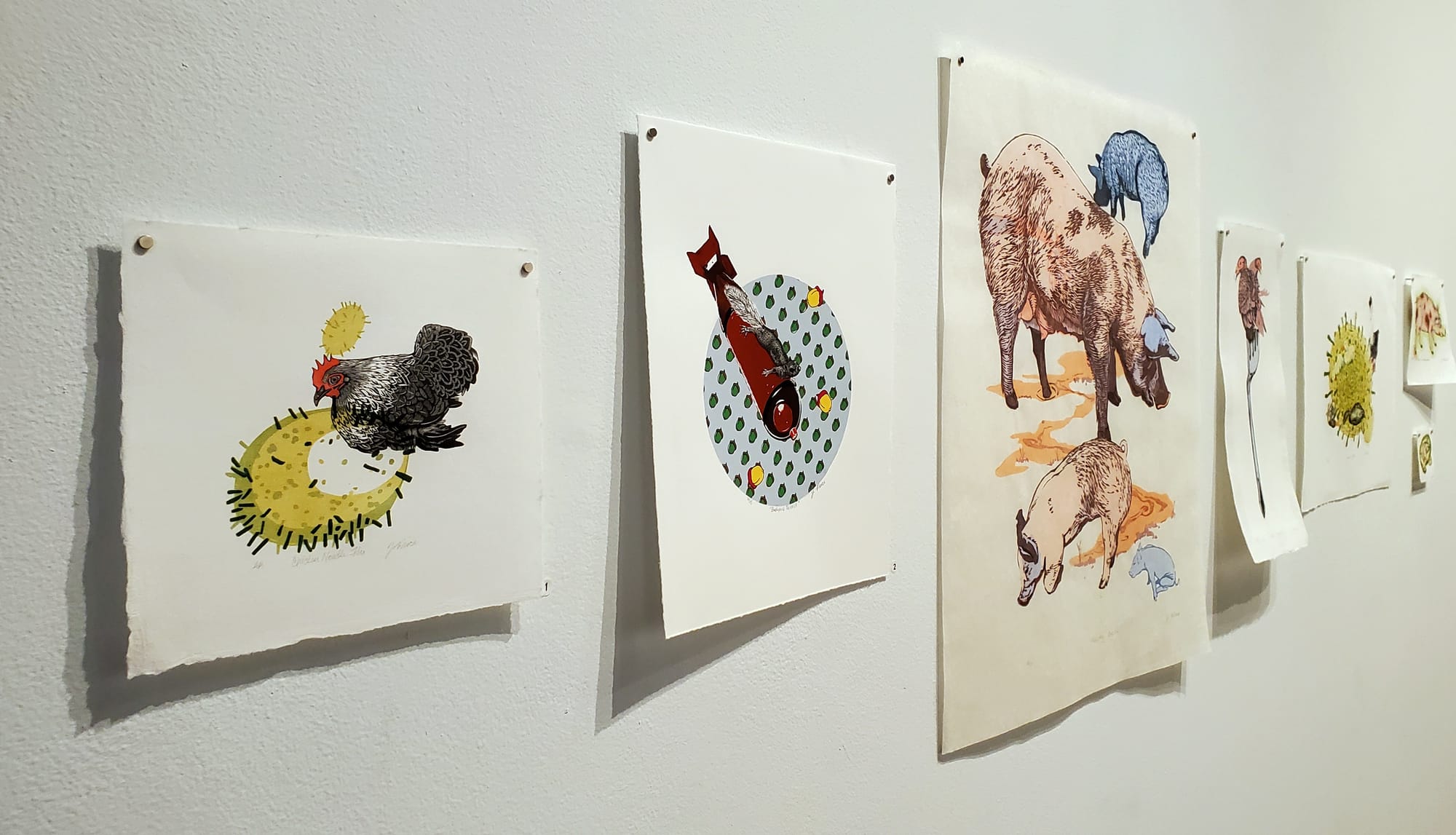
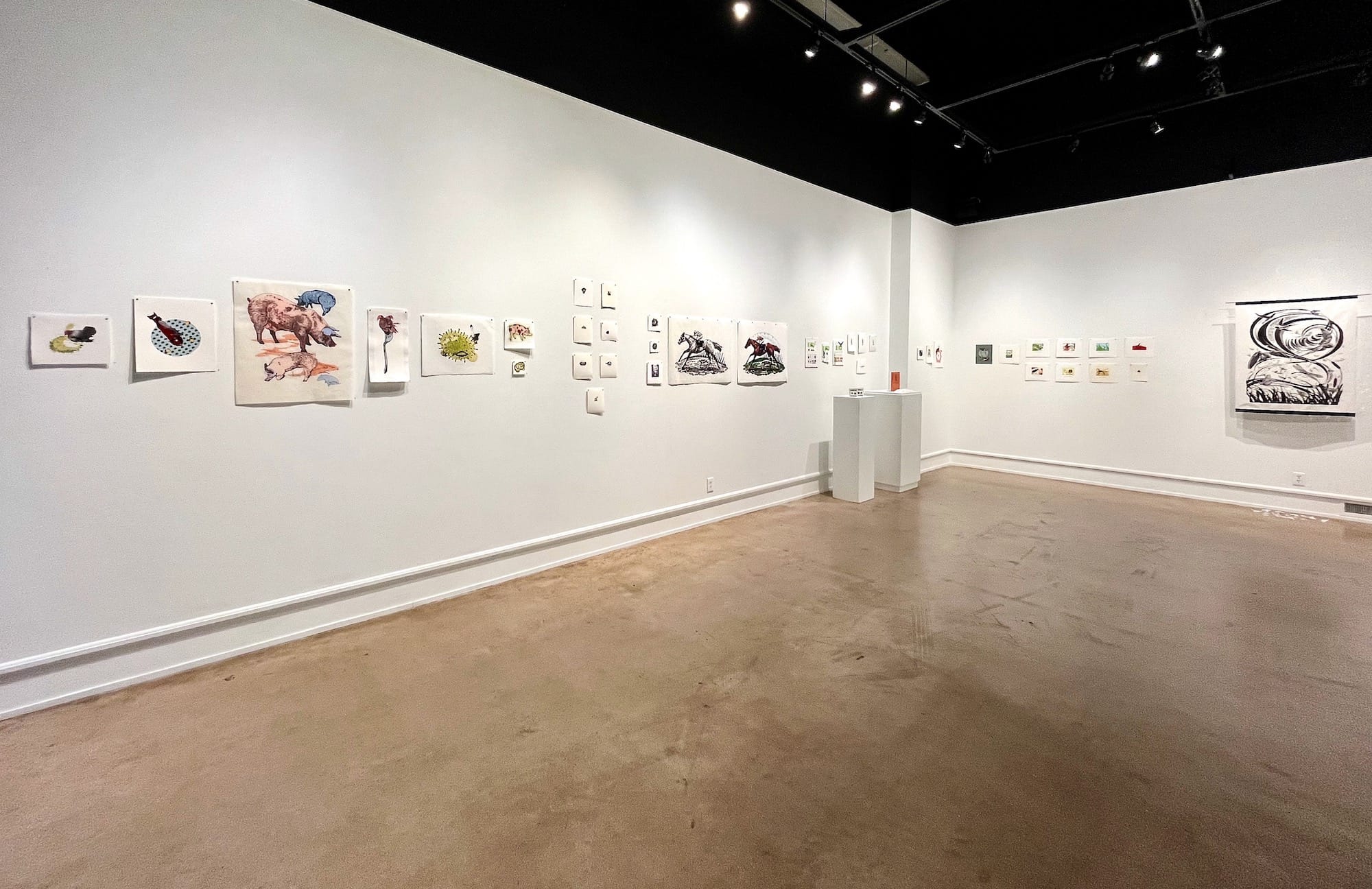
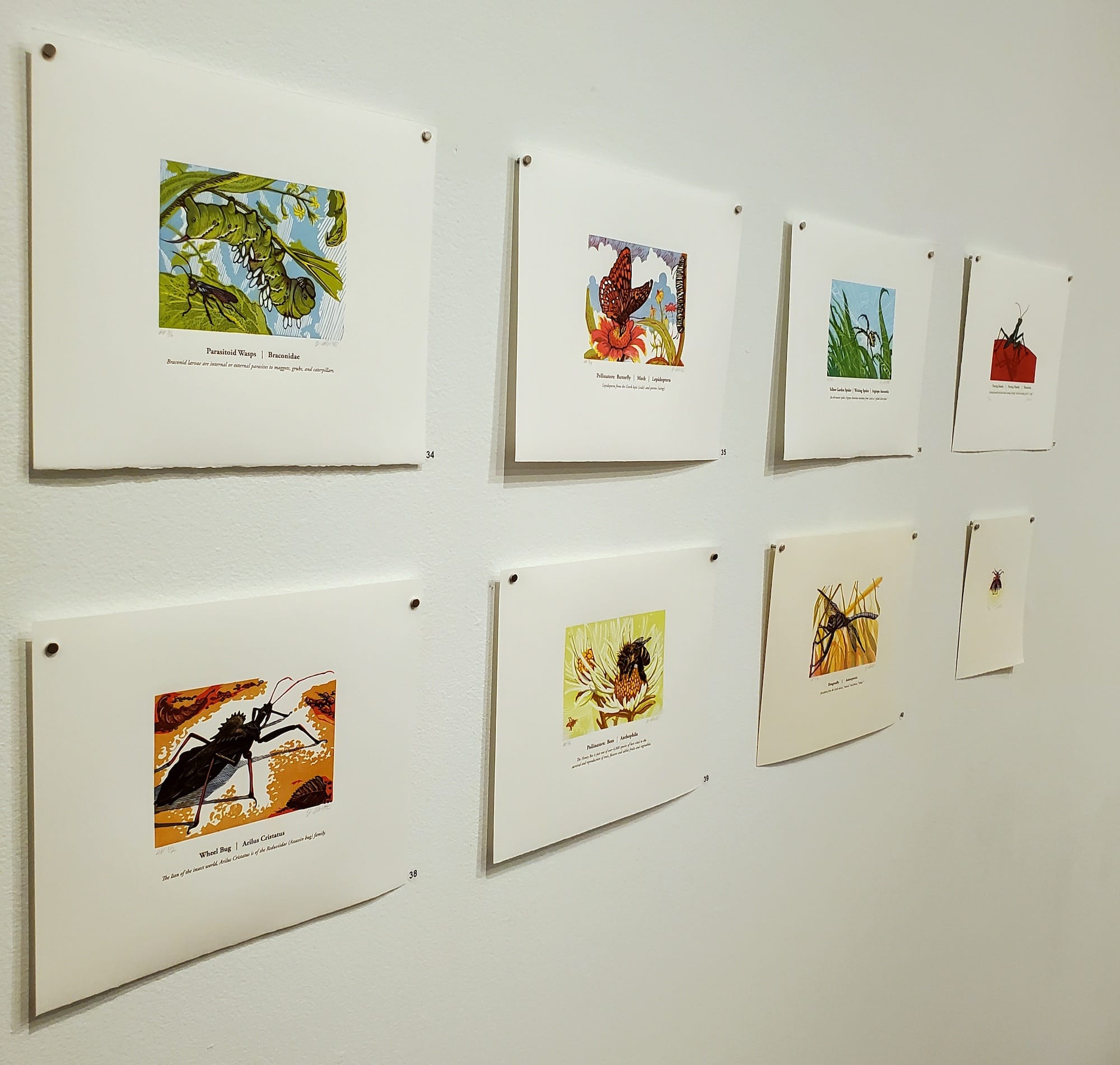
Installation views of "Illustrated Nature," an exhibition by Joanne Price in the Clayton Staples Gallery at Wichita State.
The Details
“Illustrated Nature," an exhibition by Joanne Price
October 16-November 22, 2024 at the Clayton Staples Gallery, Room 205 McKnight Art Center on the Wichita State campus, 1945 Fairmount St. in Wichita
The Clayton Staples gallery is open to the public from 9 a.m.-5 p.m. Monday-Friday.
Free
McKnight Art Center is located just north of Fairmount and 17th Streets, across the skybridge from the Ulrich Museum of art. Find WSU campus maps and parking information on the university's website.
Kevin Kelly is an artist and educator, living and painting in Wichita. He teaches drawing and painting at Butler Community College in El Dorado, Kansas.
Support Kansas arts writing
The SHOUT is a Wichita-based independent newsroom focused on artists living and working in Kansas. We're partly supported by the generosity of our readers, and every dollar we receive goes directly into the pocket of a contributing writer, editor, or photographer. Click here to support our work with a tax-deductible donation.
❋ Derby man has the kind of voice that turns heads — and chairs
❋ Socializing while sober: how some Wichitans are cultivating alcohol-free communities
❋ As a small creative business closes, the owner mourns
❋ Painting through it: Autumn Noire on 20 years of making art
❋ How a guy from Wichita resurrected 'Dawn of the Dead'
❋ Bygone Friends University museum housed curious collections
More visual arts coverage from the SHOUT
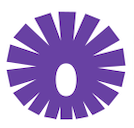 The SHOUTKate Nance
The SHOUTKate Nance
 The SHOUTKrista Vollack
The SHOUTKrista Vollack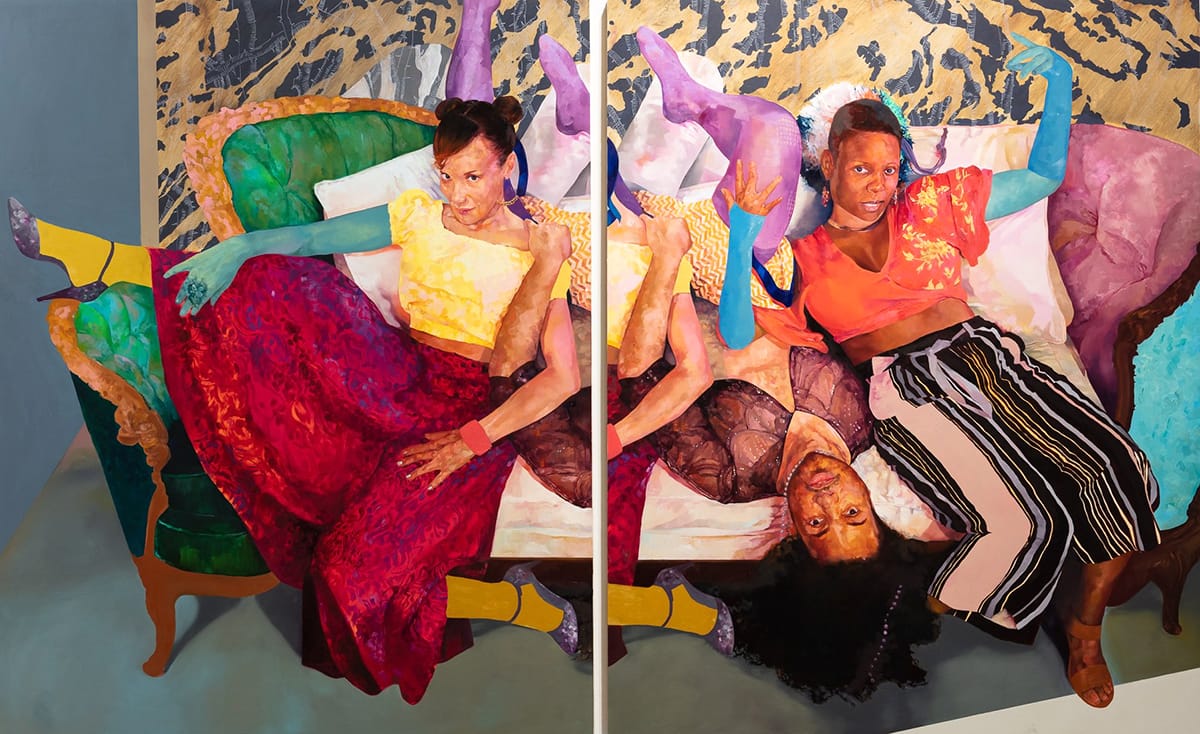
 The SHOUTJeromiah Taylor
The SHOUTJeromiah Taylor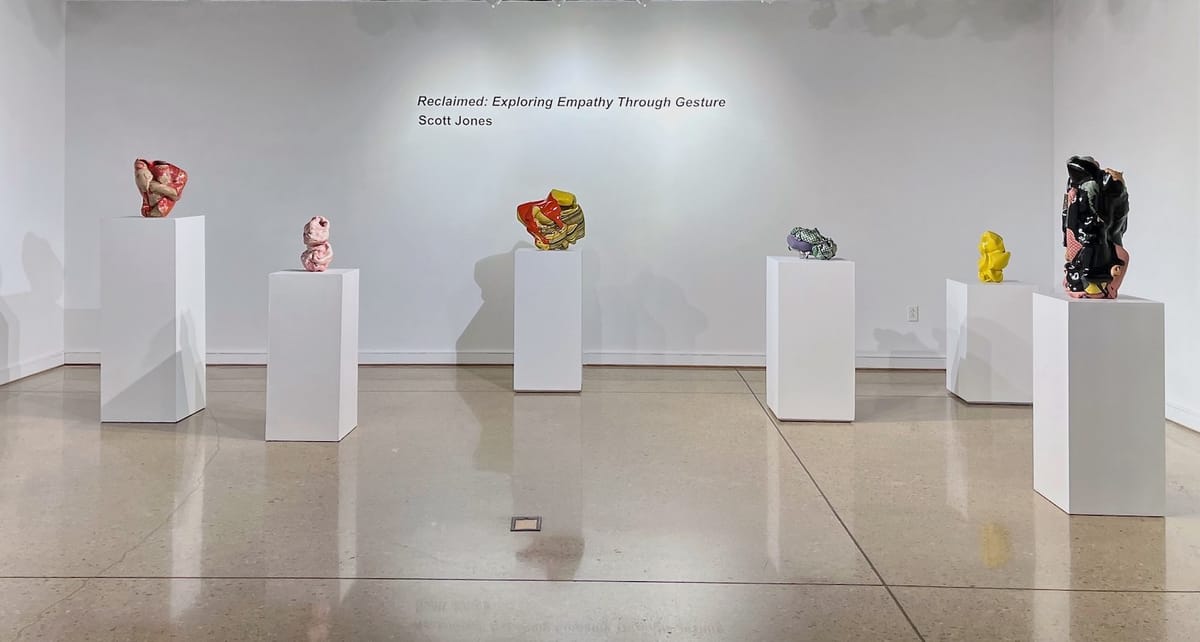
 The SHOUTEmily Christensen
The SHOUTEmily Christensen